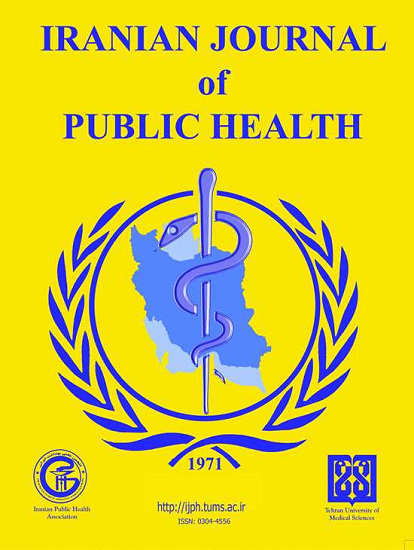Effects of Parenting Stress and Work Environment on Female Nurses’ Job Embeddedness: Does Job Engagement Play a Mediating Role?
Abstract
Background: We explored practical strategies to improve nursing staff retention in Korea, addressing the challenges posed by nursing shortages.
Methods: We examined the influence of parental stress, the nursing work environment, and job engagement (a sense of connection and commitment to work) on job embeddedness. Data were collected from 216 female nurses with children aged 1–12 years working at hospitals in Korea from August 23 to October 13, 2024. Statistical analyses included independent t-tests, one-way analysis of variance, Pearson’s correlation coefficients, multiple regression analysis, and mediating effect.
Results: Job embeddedness showed a negative correlation with parenting stress (r=-0.360, P<0.001) and positive correlation with nursing work environment (r=0.653, P<0.001) and job engagement (r=0.540, P<0.001). Job engagement was also negatively correlated with parenting stress (r=-0.265, P<0.001) and positively correlated with the nursing work environment (r=0.472, P<0.001). Nurses with higher job satisfaction also reported higher job embeddedness (β=0.36, P<0.001). Improvements in the nursing work environment were associated with increase in both job embeddedness (β=0.36, P<0.001) and job engagement (β=0.18, P=0.002). Mediation analysis confirmed that job engagement partially mediated the relationships between parenting stress, the nursing work environment, and job embeddedness (F=75.76, P<0.001).
Conclusion: Parenting stress and the nursing work environment significantly influence job engagement, which, in turn, contributes to higher job embeddedness among nurses. To improve job embeddedness for female nurses, organizations should implement support programs to reduce parenting stress, foster family-friendly work environments, and establish institutional measures to promote job engagement.
2. Shah IA, Csordas T, Akram U, et al (2020). Multifaceted role of job embeddedness within organizations: development of sustainable approach to reducing turno-ver intention. Sage Open, 10(2). https://doi.org/10.1177/2158244020934876.
3. Bayliss A (2023). Commentary: Work alien-ation and its relationship with job craft-ing and job embeddedness among a group of Iranian nurses during the coronavirus disease 2019 pandemic. J Nurs Res, 28(6-7):445–7.
4. Lee HJ, Lee SK (2022). Effects of job em-beddedness and nursing working envi-ronment on turnover intention among trauma centre nurses: A cross‐sectional study. J Nurs Manag, 30(7):2915–26.
5. Moon YK (2020). Linking mechanisms be-tween attachment quality during infancy and preschoolers’ social competence: focusing on continuity of maternal par-enting stress, social interaction, and warmth. Korean J Child Stud, 41(1):29–45.
6. Nam IS, Kim S (2017). The effects of mar-ried nurses’ parenting stress and job in-volvement on retention intention. Journal of the Korea Academia-Industrial cooperation Society, 18(6):155–64.
7. Lee YM, Yang NY (2024). Influence of par-enting stress, social support, and job sat-isfaction on job embeddedness of in shift working married nurses. J Korean Acad Soc Home Care Nurs, 31(2):166–76.
8. Seo E, Kim HJ, Hong E (2021). The effect of millennials generation nurse's nursing work environment, job embeddedness and job esteem on retention intention. J Korea Saf Manag Sci, 23(2):1–8.
9. Shang J, Friese CR, Wu E, et al (2013). Nurs-ing practice environment and outcomes for oncology nursing. Cancer Nurs, 36(3):206–12.
10. Ding X, Kan H, Chu X, et al (2022). A study of character strengths, work engagement and subjective well-being in Chinese registered nurses. Medycyna Pracy, 73(4):294–304.
11. Schaufeli W, Bakker AB (2004). Job de-mands, job resources, and their relation-ship with burnout and engagement. J Or-gan Behav, 25:293–315.
12. Abidin RR, Austin WG, Flens JR (2013). The forensic uses and limitations of the Parenting Stress Index (2nd ed). In R. P. Archer & E. M. A. Wheeler (Eds.), Forensic uses of clinical assessment instruments. PAR Inc., FL, USA.
13. Lake ET (2002). Development of the prac-tice environment scale of the nursing work index. Res Nurs Health, 25(3):176–88.
14. Mitchell TR, Holtom BC, Lee TW, et al (2001). Why people stay: Using job em-beddedness to predict voluntary turno-ver. Acad Manage J, 44(6):1102–21.
15. Schaufeli W, Bakker A (2003). Utrecht work engagement scale: Preliminary manual. Utrecht: Occupational Health Psychology Unit, Utrecht University, CS Utrecht, Nether-lands.
16. Jeong E, Jung M (2021). Effects of compas-sion satisfaction, compassion fatigue and nursing practice environment in hospital nurses on job embeddedness. The Journal of Humanities and Social Science, 12(1):1459–72.
17. Son S, Kim S (2019). The effects of nursing work environment and role conflict on3 job embeddedness among nurses of long-term care hospital. J Korea Gerontol Soc, 39(4):663–77.
18. Park KI, Kim EA (2019). The effect of nurse work environment and reciprocity on job embeddedness in the small and medium sized hospital nurses. J Converg Inf Technol, 9(8):63–73.
19. Kwag HJ, Yang NY (2023). Influence of Work Environment, Job Engagement, and Positive Psychological Capital on Job Embeddedness of Hospital Nurses. J Korean Acad Nurs Adm, 29(2):109–18.
| Files | ||
| Issue | Vol 54 No 5 (2025) | |
| Section | Original Article(s) | |
| DOI | https://doi.org/10.18502/ijph.v54i5.18638 | |
| Keywords | ||
| Job embeddedness Job engagement Nursing work environment Parenting stress | ||
| Rights and permissions | |

|
This work is licensed under a Creative Commons Attribution-NonCommercial 4.0 International License. |





